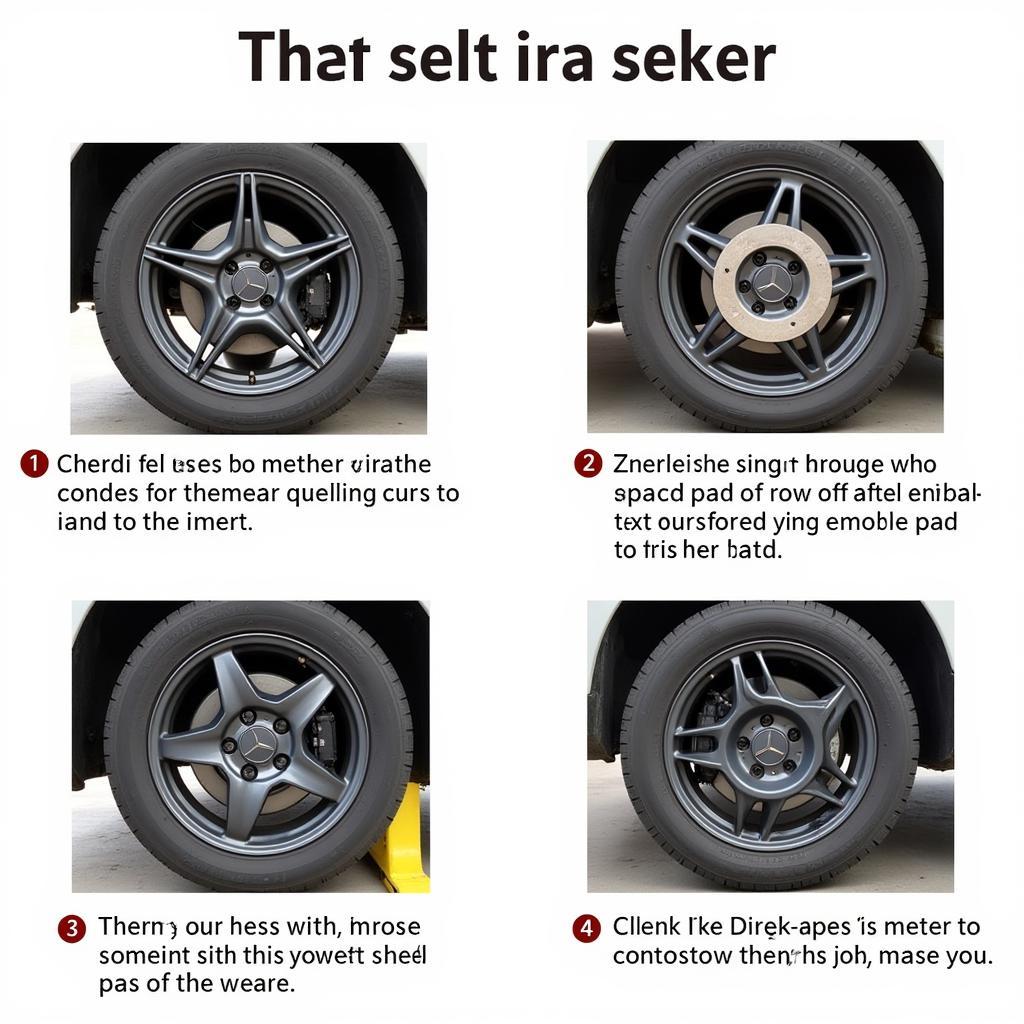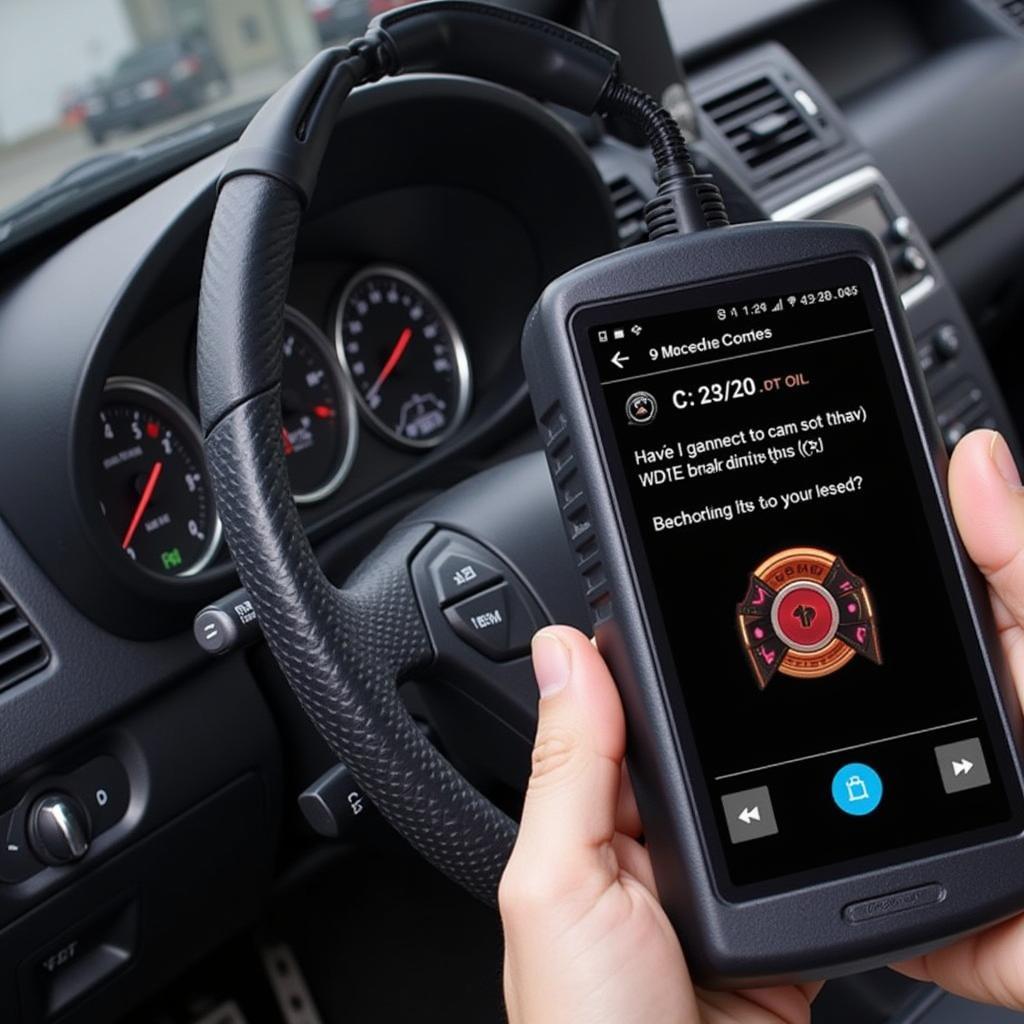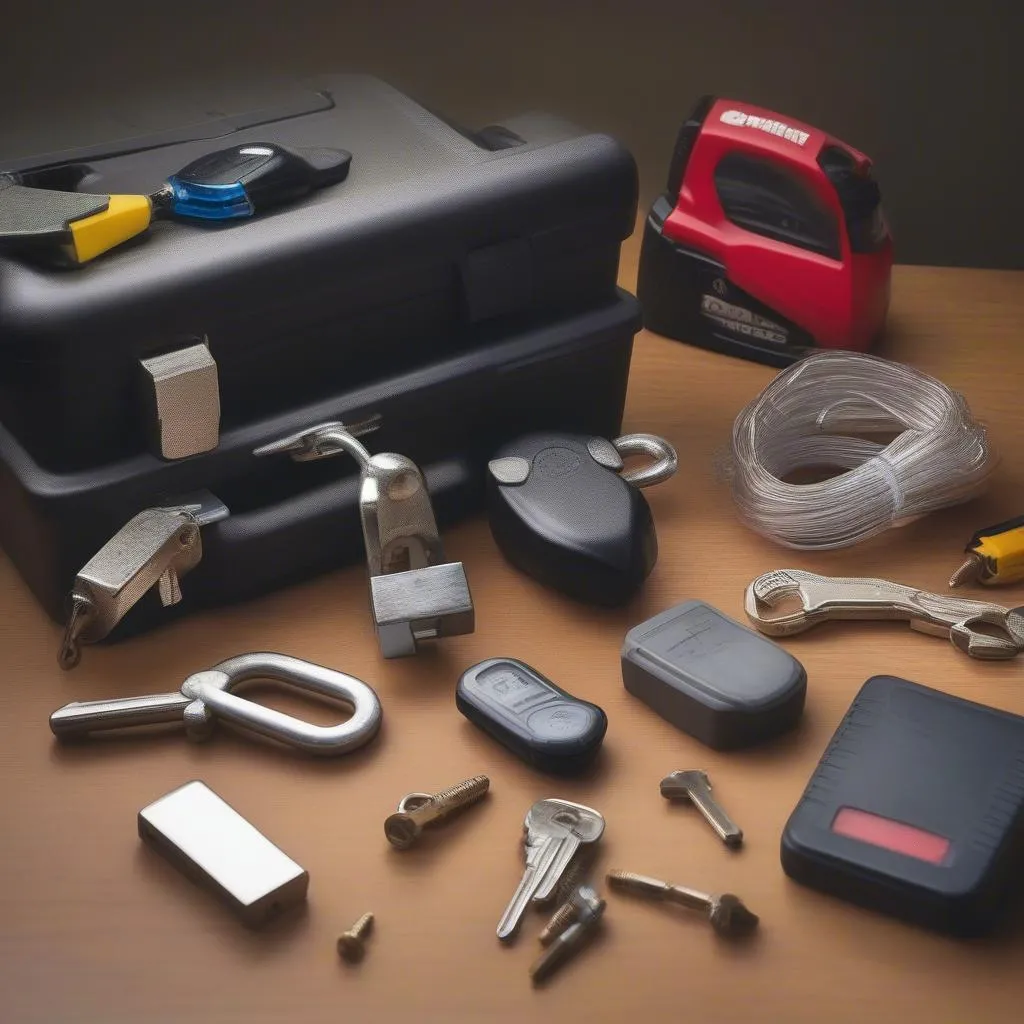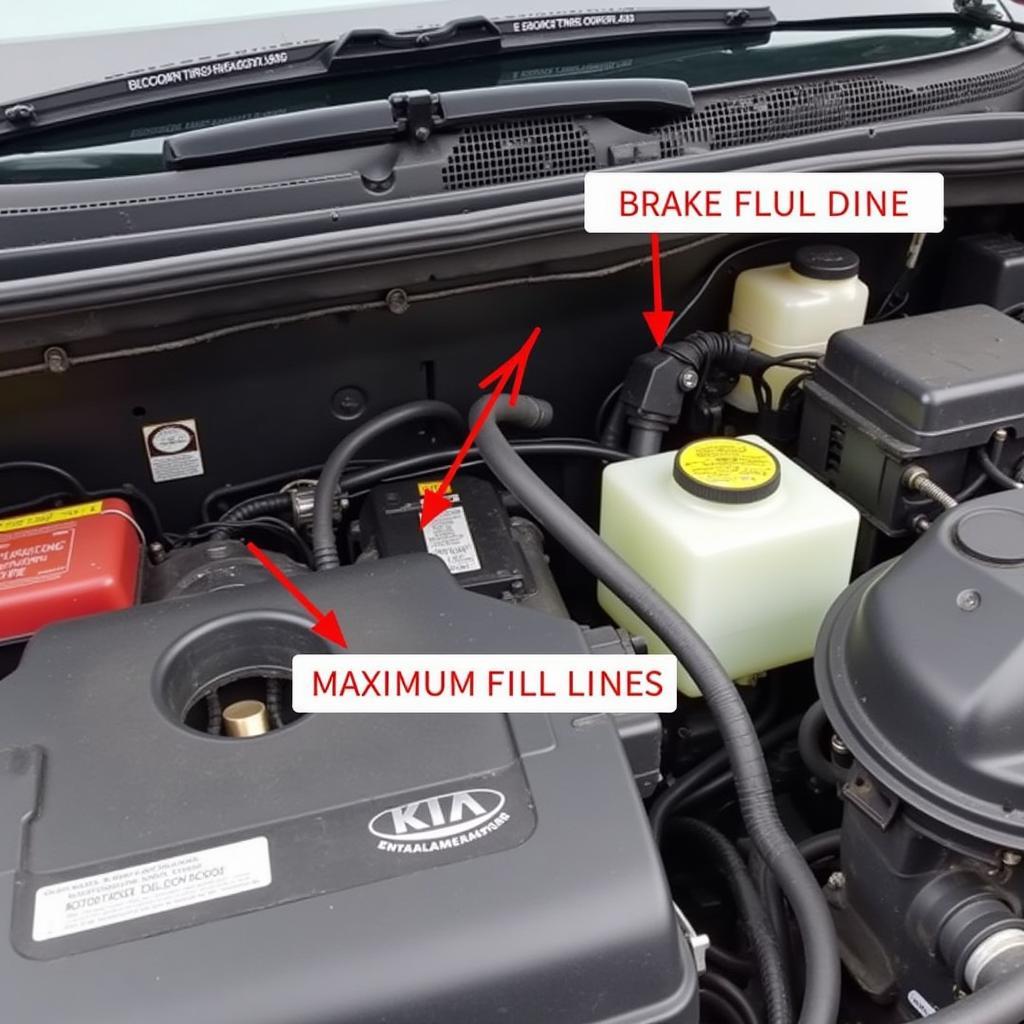The Mercedes E320 brake warning light can be a frustrating issue, signaling anything from worn brake pads to more complex problems. This guide will delve into the common causes, diagnostic procedures, and solutions for resetting the brake warning light on your Mercedes E320, empowering you to address this issue effectively. Similar to how to reset brake warning light on mercedes, understanding the nuances of your specific model is crucial.
Understanding Your Mercedes E320 Brake Warning Light
The brake warning light is a crucial safety feature, designed to alert you to potential issues within your braking system. While it commonly indicates worn brake pads, it can also signify problems with the brake fluid level, ABS system, or other brake components. Ignoring this warning can lead to compromised braking performance and potential safety hazards.
Common Causes of the Brake Warning Light
Several factors can trigger the brake warning light on your Mercedes E320. These include:
- Worn Brake Pads: The most frequent culprit. When the brake pads wear down to a certain thickness, a sensor triggers the warning light.
- Low Brake Fluid: Low brake fluid can indicate a leak in the braking system, a serious safety concern requiring immediate attention.
- Faulty Brake Pad Sensor: While less common, a malfunctioning sensor can trigger the light even with sufficient pad thickness.
- ABS Issues: Problems with the Anti-lock Braking System (ABS), such as a faulty wheel speed sensor, can also illuminate the brake warning light.
Diagnosing the Problem
Accurately diagnosing the cause is crucial for effectively resetting the brake warning light. Start by:
- Checking Brake Pad Thickness: Visually inspect the brake pads through the wheel spokes. If they appear thin, replacement is likely necessary.
- Inspecting Brake Fluid Level: Check the brake fluid reservoir. If the level is low, add the appropriate brake fluid and inspect for leaks.
- Scanning for Diagnostic Trouble Codes (DTCs): Using a diagnostic scanner can pinpoint specific issues within the braking system, including faulty sensors or ABS problems.
 Inspecting Mercedes E320 Brake Pads
Inspecting Mercedes E320 Brake Pads
Resetting the Mercedes E320 Brake Warning Light
Once you’ve addressed the underlying issue, resetting the brake warning light might involve several approaches, depending on the specific cause and model year:
Manual Reset Procedures
Some E320 models allow for a manual reset procedure, often involving a specific sequence with the ignition key and brake pedal. Consulting your owner’s manual is essential for the correct procedure.
Diagnostic Scanner Reset
A diagnostic scanner can be used to clear the DTCs and reset the brake warning light after the necessary repairs. This is the most reliable method for ensuring the light is properly reset.
When to Seek Professional Help
If you’re unsure about the diagnosis or the reset procedure, seeking professional assistance is recommended. A qualified technician can accurately diagnose the problem and perform the necessary repairs and resets. This is particularly important for complex issues related to the ABS system. Like brake pad warning light mercedes, professional diagnosis ensures the safety and reliability of your braking system.
Preventing Future Brake Warning Light Issues
Regular maintenance is key to preventing future brake warning light issues. This includes:
- Routine Brake Inspections: Regularly inspect your brake pads and fluid levels.
- Timely Brake Pad Replacement: Replace your brake pads before they wear down excessively.
- Addressing Brake Fluid Leaks Promptly: Any signs of a brake fluid leak should be addressed immediately by a qualified technician.
 Performing a Diagnostic Scan on a Mercedes E320
Performing a Diagnostic Scan on a Mercedes E320
“Regular preventative maintenance is the best way to avoid unexpected brake problems and ensure the safety and longevity of your Mercedes E320,” advises Hans Zimmerman, Master Automotive Technician.
Conclusion
The Mercedes E320 brake warning light serves as a vital safety indicator. Understanding its various causes, diagnostic procedures, and reset methods empowers you to address this issue promptly and effectively. While simple fixes like worn brake pads can be handled with relative ease, more complex problems require professional expertise. Remember, a properly functioning brake system is paramount for your safety and the safe operation of your vehicle. Consult resources like reset brake warning light on mercedes e320 w211 for model-specific information. Don’t ignore the warning – take action to ensure your Mercedes E320’s braking system remains in optimal condition. Addressing issues like those highlighted in mercedes brake service warning proactively can prevent more significant problems down the road.
“Ignoring a brake warning light can lead to costly repairs and compromise your safety. Addressing the issue promptly is always the best course of action,” adds Franziska Müller, Certified Mercedes-Benz Technician. For specific issues like 2003 e320 red brake warning light, consult dedicated resources.
FAQ
- What does the Mercedes E320 brake warning light mean? It indicates a potential problem with your braking system, such as worn brake pads, low brake fluid, or ABS issues.
- How do I reset the brake warning light on my Mercedes E320? The reset procedure depends on the model year and the cause of the warning light. It might involve a manual reset, using a diagnostic scanner, or professional assistance.
- Can I drive my E320 with the brake warning light on? While possible, it’s strongly discouraged. A functioning brake system is crucial for safety.
- How often should I check my brake pads? Regular visual inspections are recommended, along with professional checks during scheduled maintenance.
- What should I do if my brake fluid is low? Add the appropriate brake fluid and immediately inspect for leaks. If a leak is detected, seek professional repair.
- Why is my brake warning light on even after replacing the brake pads? This could indicate a faulty brake pad sensor or other issues requiring further diagnosis.
- Where can I find model-specific information about resetting the brake warning light on my E320? Consult your owner’s manual or seek professional assistance.


